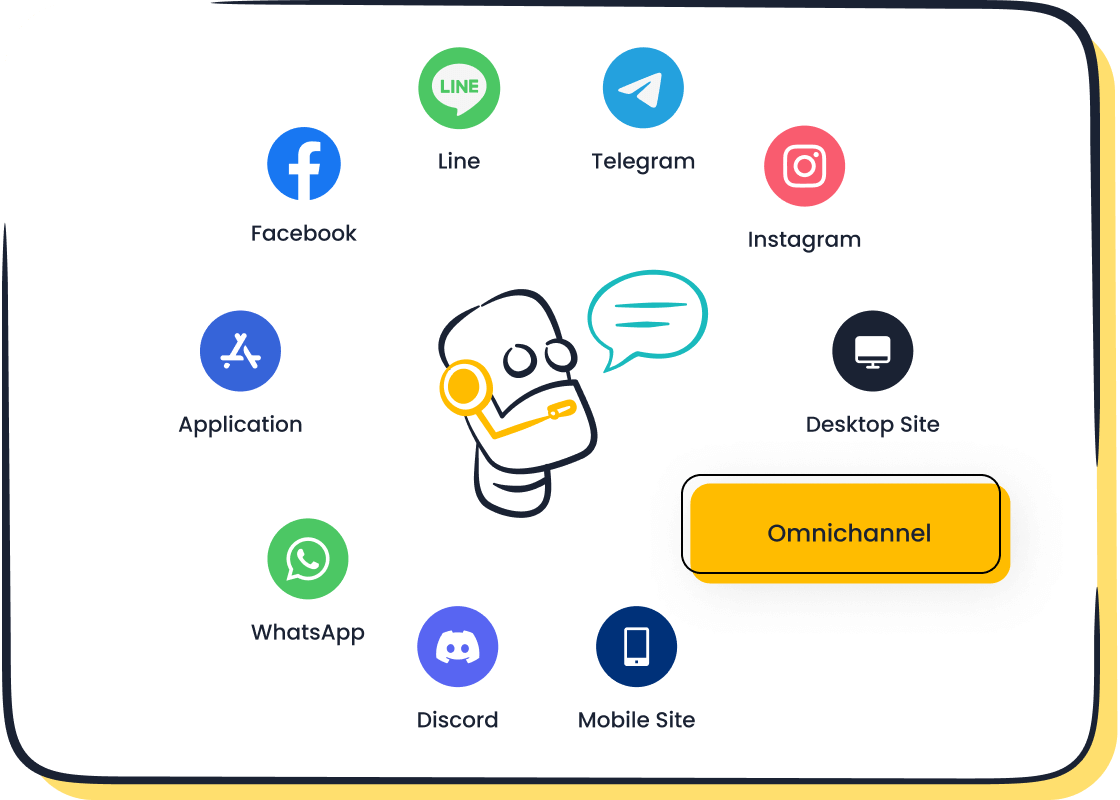Key Strategies for Multi Language Customer Service Excellence

If you want to reach customers worldwide, multi language customer service is no longer just an option. Did you know that 75% of people prefer buying from brands that offer support in their own language? Multilingual service helps you boost customer loyalty, satisfaction, and sales. Companies like Shopify saw sales jump by 76% after adding multilingual support. With Sobot AI and tools like the Sobot call center, you can make every customer feel heard and valued, no matter where they are.
Value of Multilingual Customer Service

Customer Satisfaction
When you offer multilingual customer service, you make every customer feel welcome. People want to talk about their problems in their own language. This makes them feel understood and valued. In fact, 61% of customers say they feel more satisfied when they can use their native language. If you help customers in the language they prefer, you solve their issues faster and with fewer mistakes. For example, in the utilities industry, companies that use bilingual agents and real-time translation see higher satisfaction scores and fewer dropped calls. Customers trust you more when they know you care about their comfort and needs.
Tip: Using a solution like Sobot’s AI Chatbot, which supports multiple languages, helps you answer questions quickly and accurately, no matter where your customers live.
Market Reach
Multilingual customer service opens doors to new markets. About 68% of people are more likely to buy from a business that offers support in their own language. If your website and support team speak several languages, you can reach more customers around the world. Nearly 90% of shoppers will not buy from English-only websites, so adding more languages means more sales and better customer acquisition. Companies like Microsoft and Airbnb have seen big changes—good and bad—based on how well they support different languages. With Sobot’s omnichannel tools, you can connect with customers on WhatsApp, SMS, and more, making it easy to grow your business in new places.
Here’s a quick look at the impact:
| Benefit Category | Description & Impact | Supporting Data / Outcome |
|---|---|---|
| Expanded Market & Higher Revenue | Multilingual support enables global market reach and revenue growth. | 50.8% of consumers more likely to buy from companies catering globally; 70% of world market growth predicted from emerging markets. |
Brand Loyalty
When you speak your customers’ language, you build trust. People remember brands that make them feel special. Over 70% of global consumers say native language support is key for loyalty. If you help customers in their own language, they are more likely to come back and tell friends about your service. One large retailer saw a 25% boost in repeat purchases from Spanish-speaking customers after adding Spanish-language support. Multilingual customer service also helps you keep customers longer, which means better customer retention and more positive reviews.
Note: Sobot’s multilingual solutions let you offer consistent, friendly service in many languages, helping you turn first-time buyers into loyal fans.
Assessing Language Needs
Audience Analysis
You can’t deliver great multilingual support if you don’t know your customers. Start by learning who they are and what languages they speak. Use tools like Survicate or Qualaroo to run quick surveys. These help you collect feedback in the actual words your customers use. Google Analytics shows you where your visitors come from and which languages they prefer. Hotjar lets you watch how people interact with your site, so you can spot language barriers.
To get a full picture, try these ways to segment your audience:
- Demographics: age, gender, income, education, and location
- Interests: hobbies, values, and lifestyles
- Behavior: purchase history and loyalty
- Geography: regional language and cultural preferences
- Technology: devices and platforms your customers use
- Customer journey stage: are they new or returning?
- Social media habits: which platforms do they use most?
When you understand your customers, you can match your multilingual service to their real needs.
Language Prioritization
You probably can’t support every language at once. So, how do you pick the right ones? Look at your customer data first. Which languages do most of your customers use? Where do they live? Check what your competitors offer, but also look for gaps you can fill. Think about the return on investment—some languages may bring more business than others.
Here’s a quick table to help you see the impact of different languages:
| Language | Approximate Native Speakers | Economic Significance | Geographic Reach |
|---|---|---|---|
| English | 339 million | Major business language | Global |
| Mandarin | 897 million | Huge consumer market | China, Asia |
| Spanish | 427 million | Spoken in 24 countries | Europe, Latin America, US |
| Arabic | 290 million | Key in Middle East, Africa | Middle East, Africa |
| French | 77 million | Used in 29 countries | Europe, Africa, Canada |

You should also keep an eye on trends. As your business grows, your language needs may change. Sobot’s multilingual chatbot makes it easy to add new languages as your customer base expands.
Channel Selection
Not all customers want to talk in the same way. Some prefer email, others like live chat, phone, or social media. In some regions, WhatsApp or WeChat is the top choice. In others, people use LINE or Facebook. You need to meet your customers where they are.
Here are some popular channels for multilingual customer service:
- Email: Good for detailed questions, but make sure you have templates in different languages.
- Live chat: Fast and personal. Sobot’s live chat supports many languages and lets you respond in real time.
- Phone: Some customers want to hear a friendly voice. Make sure your team understands accents and local customs.
- Social media: Pick the right platform for each region.
- Self-service: Offer FAQs, knowledge bases, and chatbots in multiple languages.
Tip: Sobot’s omnichannel platform lets you manage all these channels in one place, so you never miss a message—no matter which language or channel your customers choose.
Building a Multilingual Team
Hiring Strategies
You want your multilingual customer support team to shine, so start with smart hiring. First, figure out which languages your customers actually use. This helps you find the right multilingual agents who can connect with your audience. Look for people who are native speakers or truly fluent in those languages. They will understand not just the words, but also the local customs and business practices. Many companies choose between in-house teams, outsourced partners, or a mix of both. If you go with outsourcing, make sure your partner provides agents with real customer service experience and ongoing training. Sobot’s omnichannel platform makes it easy to route tickets by language, so you can match each customer with the best agent for their needs.
Tip: Multicultural teams help your brand feel more inclusive and trustworthy to customers from different backgrounds.
Training and Culture
Hiring multilingual agents is just the beginning. You also need to train them on cultural norms and communication styles. Cultural training helps your team avoid misunderstandings and makes every customer feel respected. For example, Spanish-speaking teams can tailor their approach for Latin American customers, building trust and loyalty. Companies that invest in cultural training see a 20% boost in successful teamwork and a 19% rise in employee retention, according to Deloitte and McKinsey. When your team feels included and confident, they deliver better multilingual customer service. Sobot supports ongoing training by providing easy access to knowledge bases and workflow automations in multiple languages.
Quality Assurance
To keep your multilingual customer support top-notch, set clear quality standards for all languages. Train your team on these standards and use regular feedback sessions to help them improve. Technology can help here—AI-powered tools like Sobot’s chatbot and reporting features let you track service quality across languages. Combine automated checks with human review to catch errors and make sure your messaging fits each culture. Keep your knowledge base up to date and use analytics to spot trends in customer needs. This way, you deliver consistent, high-quality service no matter which language your customers speak.
Technology for Multi Language Customer Service

Technology makes multi language customer service possible for businesses of any size. You can now reach customers in their own languages, no matter where they live. Let’s look at how the right tools can help you deliver effective multilingual support.

AI Chatbots
AI chatbots have changed the way you handle multilingual customer support. Modern chatbots understand and reply in many languages instantly. They use advanced natural language processing to pick up on context, intent, and even emotion. This means your customers get fast, human-like answers in their preferred language. You don’t need a huge team of multilingual agents anymore. Sobot’s AI Chatbot is a great example. It offers 24/7 multilingual support, works across channels like WhatsApp and SMS, and helps you cut costs while boosting customer satisfaction. Sobot’s chatbot can even handle complex questions and switch between languages in real time, making your service more dynamic and personal.
Tip: AI chatbots let you scale multilingual customer service without losing quality or speed.
Translation Tools
Translation tools have come a long way. AI-powered translation now understands context, grammar, and even industry-specific terms. This means fewer mistakes and more trust from your customers. For example, Gulf Bank used AI translation to cut first response times from 58 minutes to just 6 minutes. Still, some slang or cultural phrases can be tricky. That’s why many companies use a mix of AI and human translators for effective translation and localization. Sobot’s platform uses smart translation tools to support accurate, real-time multilingual support across all your channels.
- AI translation tools improve accuracy by understanding intent, not just words.
- Real-time translation helps you serve customers in multiple languages at once.
- Combining AI with human review ensures your service feels natural and local.
Omnichannel Integration
Omnichannel integration lets you connect with customers on their favorite apps—like WhatsApp, live chat, email, or phone—without missing a beat. Sobot’s omnichannel platform brings all your communication into one place. You can offer multilingual support on every channel, so customers always feel heard. This approach leads to faster responses, higher satisfaction, and a stronger brand image. The Weee! case study shows this in action: after using Sobot’s multilingual call centers and flexible IVR, Weee! saw a 20% jump in agent efficiency and a 50% drop in resolution time. Customers reported a 96% satisfaction score.
Note: Multilingual omnichannel support helps you reach new markets, build loyalty, and deliver effective multilingual support every time.
Multilingual Self-Service Resources
When you want to give customers the best experience, self-service resources in many languages make a big difference. People like to solve problems on their own, especially if they can do it in their native language. Let’s look at how you can build strong multilingual self-service tools.
Knowledge Base
A multilingual knowledge base lets your customers find answers fast, no matter where they live or what language they speak. When you offer guides, how-tos, and troubleshooting steps in several languages, you help people solve problems without waiting for an agent. This approach lowers the number of support tickets and boosts customer satisfaction. Many customers prefer self-service over waiting in line for help. If you keep your knowledge base up to date and easy to search, you make the customer experience smoother and more enjoyable.
Here are some key parts of an effective multilingual knowledge base:
- Make sure it covers all your main topics in every language your customers use.
- Use technology like Sobot’s AI-powered tools to manage translations and keep content accurate.
- Train your team to understand cultural differences and update content often.
- Add feedback options so customers can tell you if something is unclear.
- Review and improve your articles regularly.
Sobot’s knowledge base tools help you manage content in many languages, making it simple to deliver a personalized customer experience.
FAQs
FAQs are a must-have for any support center. But just translating your English FAQs isn’t enough. You need to adapt them for each language and culture. For example, some words or ideas don’t translate directly. You might need to change examples or even whole questions to fit local customs. This process, called effective translation and localization, keeps your FAQs clear and helpful for everyone.
When you create FAQs for different languages, follow these steps:
- Translate the questions and answers carefully.
- Review them with native speakers to check for clarity.
- Test them with real customers to make sure they make sense.
- Update them as you learn more about what your customers need.
If you do this well, your customers can find answers quickly, which means fewer support tickets and a better overall experience.
Localization
Localization goes beyond just translating words. You want your content to feel natural and friendly to each customer. This means changing images, examples, and even the tone of your writing to match local cultures. When you localize your help center, you show customers that you care about their needs and respect their background. This builds trust and makes your brand stand out.
Best practices for localization include:
- Adapt your content to fit local customs and laws.
- Use local experts to review your translations.
- Test your help center with real users in each region.
- Keep your brand voice consistent, but flexible enough to fit each market.
- Optimize your content for local search engines to reach more people.
Sobot’s platform supports localization by letting you manage content, media, and workflows for different regions. This helps you deliver a truly personalized customer experience and reach new markets with confidence.
Tip: When you invest in multilingual self-service resources, you make it easier for customers to help themselves. This leads to happier customers, fewer support tickets, and a stronger brand reputation.
Effective Tips for Multilingual Customer Support
Delivering great multilingual customer support takes more than just speaking different languages. You need to connect with your customers, understand their needs, and make every interaction feel personal. Here are some effective tips to help you create a better customer experience for everyone.
Cultural Sensitivity
Cultural sensitivity is key for effective multilingual communication. You want your customers to feel respected and understood, no matter where they come from. Here are some effective tips to boost cultural awareness in your team:
- Analyze which languages your customers use most and check satisfaction levels for each group.
- Set clear goals for your multilingual support, like improving customer satisfaction or response times.
- Promote inclusivity by hiring people from different backgrounds and cultures.
- Train your agents on cultural norms and communication styles. This helps them avoid misunderstandings.
- Use technology, such as Sobot’s AI Chatbot, to support user interaction in multiple languages while keeping cultural context in mind.
When you focus on cultural sensitivity, you build trust and make your brand stand out.
Fast Response
Customers expect quick answers. Multilingual customer support can match or even beat single-language support if you use the right tools. Here are some effective tips for faster service:
- Form dedicated multilingual teams to reduce wait times.
- Use AI-powered chatbots, like Sobot’s, for 24/7 instant support in many languages.
- Start with your top two or three languages and expand as you grow.
- Automate common questions to free up your agents for more complex issues.
- Combine AI speed with human review for quality and empathy.
Fast responses show customers you care about their time and needs.
Consistency
Consistency matters in every customer interaction. You want your messaging and service quality to stay the same across all languages. Try these effective tips:
- Train your team on both language skills and cultural context.
- Use translation tools and glossaries to keep your communication clear.
- Check quality often with customer feedback and analytics.
- Work with native translators for important content.
- Use technology like Sobot’s CRM to manage and track all conversations.
Consistent service builds trust and helps you deliver effective cross-cultural communication and personalization every time.
Measuring Success in Multilingual Service
Key Metrics
You want to know if your multilingual service is working. The best way to do this is by tracking a few key metrics. These numbers show you how well your team helps customers in different languages and where you can improve. Here’s a simple table to help you see which metrics matter most:
| KPI | Description | Why It Matters for Multilingual Service |
|---|---|---|
| Customer Acquisition Cost | Cost to get a new customer | Lower costs mean your service reaches more people |
| Customer Retention Rate | How many customers keep coming back | High rates show your service builds loyalty |
| Revenue Growth | Increase in sales | More languages often lead to more sales |
| Customer Satisfaction (CSAT) | How happy customers are with your service | High scores mean better experience for everyone |
You should also watch support call deflection, first contact resolution, and Net Promoter Score (NPS). These numbers help you see if your service is fast, helpful, and trusted. Sobot’s reporting tools make it easy to track these metrics across all your channels and languages.
Customer Feedback
Numbers tell part of the story, but real feedback from customers gives you the full picture. You can collect feedback in many ways:
- Use surveys and post-call questions in each language.
- Review call transcripts and chat logs to spot trends.
- Check how fast and well your team solves problems in every language.
- Segment feedback by language in your CRM to see what each group thinks.
- Use tools like Sobot’s omnichannel platform to gather and organize feedback from all your channels.
When you listen to your customers, you learn what works and what needs to change. This helps you create a better experience for everyone, no matter what language they speak.
Tip: Always ask for feedback after each service interaction. Even a simple “How did we do?” can give you valuable insights.
Continuous Improvement
Great multilingual service never stands still. You need to keep learning and growing. Here’s how you can make your service better over time:
- Build language-specific knowledge bases with FAQs and guides.
- Monitor key metrics like response time and satisfaction for each language.
- Collect feedback and use it to spot areas for improvement.
- Train your team often on language skills and cultural awareness.
- Update your tools and workflows to keep up with customer needs.
Sobot helps you with regular quality checks and easy updates to your knowledge base. You can use Sobot’s AI chatbot to handle common questions and free up your team for more complex issues. When you focus on improvement, your service stays strong and your customers stay happy.
You can achieve multi language customer service excellence by hiring skilled staff, building strong self-service tools, and using smart technology like Sobot. AI-powered platforms now handle up to 95% of customer interactions, cutting response times and boosting satisfaction. Want to get started? Try these steps:
- Review your current support channels and language needs.
- Pilot a multilingual chatbot or expand your self-service resources.
- Train your team to understand cultural differences.
Even small changes can help you reach new markets and build lasting customer loyalty.
FAQ
What is multi language customer service?
Multi language customer service means you help customers in their own language. This makes people feel comfortable and understood. Over 70% of shoppers say they stay loyal to brands that offer support in their language. Sobot makes this easy with AI-powered chatbots and omnichannel tools.
How can I start offering multi language customer service?
You can start by finding out which languages your customers use most. Use tools like Sobot’s AI Chatbot to add support for those languages. Begin with your top two or three languages, then expand as your business grows.
Why does multi language customer service matter for my business?
When you offer multi language customer service, you reach more people and build trust. Studies show 75% of buyers prefer brands that speak their language. Sobot helps you connect with customers worldwide, boosting satisfaction and sales.
Can Sobot help me manage multi language customer service across channels?
Yes! Sobot’s omnichannel platform lets you handle chats, calls, and messages in many languages—all in one place. You can serve customers on WhatsApp, SMS, email, and more. This keeps your service fast and consistent.
How do I measure success in multi language customer service?
Track key metrics like customer satisfaction, response time, and repeat purchases. Sobot’s reporting tools make it easy to see how well your multi language customer service works. You can spot trends and keep improving your support.
Need more help? Visit Sobot’s website or email marketing@sobot.io for expert advice on multi language customer service.
See Also
Effective Strategies For Managing Call Center Quality
A Ten Step Guide To Deploy Omnichannel Contact Centers
How AI Agents Are Transforming Customer Support Services
Comprehensive Overview Of Omnichannel Software For Call Centers
